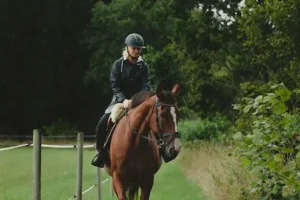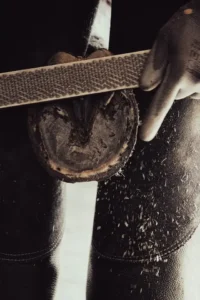The horse, as an animal, prides itself on its physical capabilities. Horses can, however, have skeletal and muscular problems that affect their mobility. One critical region that is affected by osteoarthritis is the Horse’s Hocks.
At what age do horses hocks fuse? While answering this question, we will also look into proper horse hock care and how exactly hock fusion can benefit these animals.
What Age Do Horses Hocks Fuse?
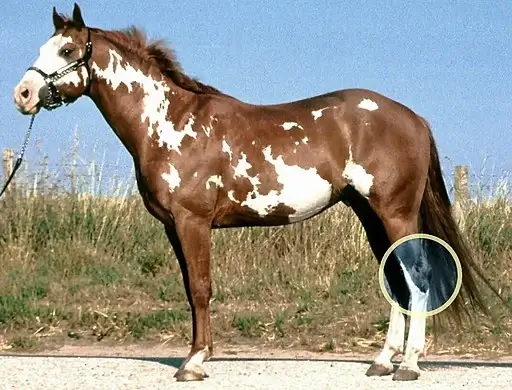
Horses’ hocks do not fuse until they are at least 5 ½ years old. A fusion can develop both at a young age (a process known as juvenile osteochondral disease) and the much more common degenerative joint disease due to old age.
From a structural point of view, a horse’s skeletal maturity, which includes the fusion of all growth plates, is usually achieved when the horse is around six years old.
This process depends on the horse’s overall state of health and nutrition, its age, the precise environment of the fusion, and the several occurrences immediately preceding it.
However, it has been studied that horse’s hocks fuse within the first 6 to 10 months (for about 75% to 85% of horses) for those who have been introduced to MIA treatment on the joints.
Why Do Horse’s Hocks Fuse?
Horse’s hocks fuse typically at the lower two joints of the Horse’s Hocks, known as the distal intertarsal joint and the tarsometatarsal joint. Osteoarthritis causes a lot of things; one of them is unnatural bone growth, also referred to as bony proliferation. When this happens, joints ultimately fuse.
The DIT and TMT do not suffer much change from the fusion since they are not designed to show a great deal of motion anyway. For a horse suffering from osteoarthritis, a horse’s hock fuse can relieve the animal of a lot of pain.
To speed up the process of fusion as well as monitor its level and intensity, horse owners should approach a vet specialist. The main goal of a horse’s hock fuse is to decrease the pain and increase the horse’s performance.
A horse’s hock fuse can also happen through sudden trauma or injury, as is very common among most mammals, including humans. The time taken for a Horse’s hocks to fuse can vary depending on the total duration of ankylosis (the process of bone fusion).
Must Read: Do Horses Have Periods?
The Anatomy Of Horse’s Hocks
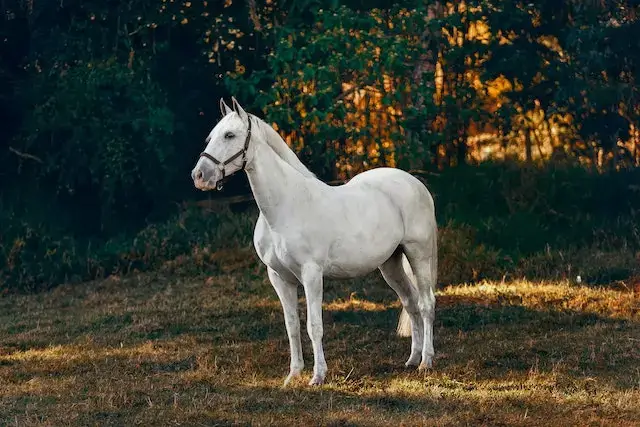
There are many similarities between a Horse’s Hocks and human ankles. The hocks are primarily made up of 4 different joints – the tarsocrural joint, the proximal intertarsal joint, the distal intertarsal joint, and the tarsometatarsal joint.
The high-motion joints have an amazing range of mobility and can easily flex and extend to fascinating degrees. The low-motion joint works as a shock absorber.
While the DIT and TMT joints are known to be low-mobility joints in the horse’s body, the TSC hock joint connected to these is a high-mobility joint and has a crucial role to play in the horse’s performance.
While suffering from osteoarthritis, horses can experience cartilage destruction, joint fusion, and abnormal bone growth. Horse’s Hocks are tender, vulnerable regions that are often compared with the human ankle.
Much of the lameness that horses deal with can come from this disease. Osteoarthritis is mostly an aging disease in horses but can also be a result of performance or injury.
Horse’s Hocks Fuse: Most Common Symptoms
Depending on the horse’s age and situational conditions, your horse can show several telling signs.
- Progressing lameness: The horse’s hocks fuse slowly. Osteoarthritis is itself a progressive disease. Along with showing increasing signs of lameness, your horse might also show lethargy and aloofness.
- Pain in the horse’s hock region: The most tell-tale sign of fusion will be increasing pain in that region. A vet will be able to provide relief for this.
- History of osteoarthritis: If your horse has been suffering from osteoarthritis for a while, you might expect to see the hocks fuse at one point in time. It usually happens within the first 6 to 10 months.
- Stiffness in local muscles: When the fusion process is underway, there will be some sure signs of stiffness and even swelling in the muscles of that area. Proper bondage and massage can improve the situation a bit.
Brief Guide To Proper Horse’s Hocks Care During Fusion
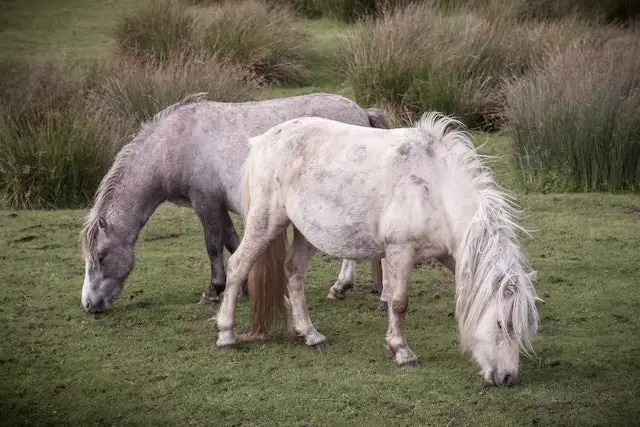
Since a horse’s hocks determine a major aspect of its locomotive capabilities, following a proper horse’s hocks care plan is necessary for both healthy and affected horses.
Here is what you can do as the caregiver while your horse is going through a fusion process.
- A high nutritional diet: Joint support supplements are often given to young horses who engage in extensive training. You can provide similar supplements to your horse with the guidance of your vet. A nutritional diet that builds skeletal strength and immunity is a must.
- Low-intensity exercise: Engage in gentle exercises with your horse. Give it a good amount of rest, but make sure to go on walks and even hire a physiotherapist when necessary.
- Pain medicine and vet visits: Pain medication can do as much good for horses as it does for humans. The horse’s hock fuse process can be extremely painful and time taking. Ask your vet to provide as much pain relief as possible.
- Therapeutic boots: Therapeutic wraps and boots can be an amazing way to provide some temporary relief to your horse. Pay close attention to the kind of boot it prefers; the texture, softness, and temperature can all be important.
- Connecting and communicating: Your horse needs you by its side during these difficult times. Spend as much time as possible with your horse and communicate in your special way.
Recommended Reading: How A Horse’s Hoof Should Look?
Final Thoughts
Horse hocks might be an important skeletal organ in terms of horse performance, but at the end of the day, they are a living body part that is causing your horse a lot of pain.
The horse must not be forced to recover exceptional performance after the hocks have fused.
While your horse’s hocks undergo natural or surgical fusion, make sure to stress the humane healing process that is essential for your horse at this moment.
Frequently Asked Questions
Q1. How do you tell if your horse’s hocks are fusing?
Ans: Early signs of hock problems can be subtle, such as on-again-off-again lameness, stiffness that improves with warming up, resistance to going downhill or backing off the trailer, and sore muscles in the lower back.
Q2. How long does it take for a hock to fuse?
Ans: The time it takes for a hock to fuse varies. Generally, fusion takes six to nine months to develop, and, at most, 65% of treated horses are able to return to some work.
Q3. How long does it take for hocks to fuse naturally?
Ans: Hock fusion takes time, but it is not certain how long it will take. Often, it is a painful and slow process, and it is difficult to predict when and how long it will take. Approximately 25% of hocks naturally fuse.

